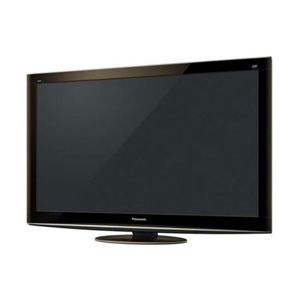 Taking the plunge into 3D home entertainment? Here are some components you’ll need to know about.
Taking the plunge into 3D home entertainment? Here are some components you’ll need to know about.
Did everyone finish their required 3D reading? After last week’s class on 3D: Getting to Know the Basics, I hope everyone has a handle on the physics and physiology of how 3D works. Now we’re moving on to the nuts and bolts … the hardware you’ll need to to get your own 3D theater up and running in time for poison arrows, missiles, and Smurf-a-hontas to fly past your Berklines. Here are some FAQs:
1. Will I need a new display to enjoy 3D? If so, why?
To avoid a 3D format war, HDMI Licensing, LCC has released the 3D portion of the HDMI 1.4 spec for incorporation by all licensees, not just consortium members. The spec outlines “Full HD 3D” as being able to present a 1080p frame at 60Hz refresh to EACH eye. Since each eye sees its own frame, and everyone I know has two eyes, this means the combined signal will need to support 1080p at 120Hz. While many current displays are capable of refreshing at a 120Hz or higher, 120Hz INPUT signals are not supported by the current HDMI 1.3a spec. There are other more technical issues regarding LCD response time and processing power, but the 120Hz input requirement is the main consideration. Other lower resolutions outside of “Full HD 3D” may be added in the HDMI 1.4a spec, but that’s mostly speculation.
2. My Mitsubishi DLP TV is “3D Ready.” What does this mean?
Your TV is capable of creating the 3D effect, but the method it uses is not compatible with the newly released 3D Blu-ray spec. Mitsubishi uses a checkerboard pattern frame field, while the 3D Blu-ray spec uses frame stacking. Hope is not lost, however. At CES 2010 Mitsubishi announced a 3D Blu-ray adapter (3DC-1000) that will convert 3D Blu-ray signals to be compatible with the Mitsubishi’s 3D process. Other manufacturers who have sold “3D Ready” displays have not announced similar adapter devices.
3. Will I need a new 3D Blu-ray player as well?
Sadly, yes. For the same reasons you’ll need a new TV (mainly the 1080p120 requirement), as well as internal 3D processing and active-shutter glasses sync, most current Blu-ray players are not 3D capable. Luckily, most CE brands have announced new 3D capable players, and the price points aren’t breaking the bank either. The main exception is the PlayStation 3, which Sony announced will receive a 3D firmware upgrade. This is possible because the PS3’s cell processor provides much more horsepower than most stand-alone BD players. If and how the PS3 will meet the 1080p120 requirement without HDMI 1.4 is yet to be seen.
4. TV? Check. Blu-ray player? Check. What else will I be reaching into my wallet for?
Chances are, HDMI 1.3a cabling won’t have the bandwidth to carry 1080p120 signals required for “Full HD 3D”. Also, HDMI 1.3a switching AVRs won’t be able to pass through the 3D signal, so they’ll either need to be bypassed with a direct video connection or replaced. Sony and Pioneer have both announced 3D-capable AVRs, and other AVR manufacturers will surely follow suit. Did everyone bring your calculators? This is all adding up quick.
Now that everyone has a good case of 3D sticker shock going, let’s dismiss and head over to Caribou Coffee to perk back up. Next week we’ll pick up with some discussion of the what, where, and why of 3D content. Class dismissed.
by Stephen Hopkins
http://www.electronichouse.com/article/3d_getting_to_know_the_hardware/
Custom Installation Services, LLC – Audio/Video Sales, Service and Installation in North Carolina and South Carolina



 The Complete 20th Season of The Simpsons heads this week’s roundup of Blu-ray release titles.
The Complete 20th Season of The Simpsons heads this week’s roundup of Blu-ray release titles.